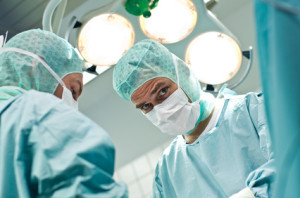Contents
How amino acids help treat cancers
Hearing a diagnosis of cancer from a doctor is always a shock, but thanks to advances in science and medicine, such a condition is no longer always fatal. Many treatments are currently available, the best known being chemotherapy and radiotherapy, and many more are being developed all the time.
 With a wealth of funding and grants available for researchers the field attracts the brightest and best scientists and, thanks to their work, cancer sufferers can now have more hope than ever before. One of the cancer treatments that seems to be proving effective over time is CAAT: Controlled Amino Acid Treatment. CAAT works by restricting certain amino acids from the diet to combat the growth and reproduction of the cancerous cells.
With a wealth of funding and grants available for researchers the field attracts the brightest and best scientists and, thanks to their work, cancer sufferers can now have more hope than ever before. One of the cancer treatments that seems to be proving effective over time is CAAT: Controlled Amino Acid Treatment. CAAT works by restricting certain amino acids from the diet to combat the growth and reproduction of the cancerous cells.
What are amino acids?
Amino acids are essential organic compounds found throughout the natural world. Each amino acid is primarily made up of four key elements: carbon, nitrogen, oxygen and hydrogen, although each overall molecule has characteristic ‘side chain’ which contains traces of different elements. It is these ‘side chains’ that distinguish between the different types of amino acids.
There are 20 standard amino acids (as well as many non-standard ones) of which 9 or 10 are considered to be ‘essential amino acids.’ The essential amino acids cannot be made inside the human body, and have to be ingested through food. Occasionally an amino acid can become ‘conditionally essential’ to help our bodies overcome a disease. Other species require different amino acids to those needed by humans.1
Benefits and Usage of CAAT
Amino acids have several different purposes in our lives, from forming the building blocks of proteins and acting as neurotransmitters in our brains, to being used in the manufacture of fertilizer, biodegradable plastics and certain drugs.
The primary use of amino acids is that they are, to put it very simply, the building blocks of protein. Much as an entire train is made up of different carriages, so too are proteins made up of amino acids. Some proteins contain as few as three amino acids, while others can contain hundreds. While interesting, this is not why amino acids are used in cancer treatments.
Amino acids have different effects on cells; some help them to grow and reproduce while others keep them healthy and true to the DNA blueprint embedded in the cell at its creation. CAAT works at keeping the body’s balance of health-giving amino acids high, and the fast-growth amino acids low, to put it simplistically. All this combines to produce a situation where the body is better able to effectively fight off the disease. For example, glycine, amongst several other amino acids, is particularly useful for promoting cell growth: ideal in a baby, but not welcome in a cancerous tumour. Lysine, also an essential amino acid, works to inhibit the invasion of healthy tissue by cancerous cells, particularly when combined with Vitamin C.2
Starving the Tumor
 A growing tumour needs, more so than any normal tissue, a good supply of blood to thrive. Normal cells have an integral blood supply, while cancer cells must create new blood vessels as it grows. Elastin is a protein essential to the formation of new blood vessels, therefore cancers must be deprived of elastin to minimise or inhibit growth. The constituent amino acids found in elastin are: proline, glycine and the three BCAAs leucine, isoleucine and valine; glycine comprises almost one quarter of the make-up of the elastin.
A growing tumour needs, more so than any normal tissue, a good supply of blood to thrive. Normal cells have an integral blood supply, while cancer cells must create new blood vessels as it grows. Elastin is a protein essential to the formation of new blood vessels, therefore cancers must be deprived of elastin to minimise or inhibit growth. The constituent amino acids found in elastin are: proline, glycine and the three BCAAs leucine, isoleucine and valine; glycine comprises almost one quarter of the make-up of the elastin.
CAAT is proving effect in trials and case studies, and oncologists are relatively willing to recommend the treatment as it is non-invasive, consisting of predominantly dietary changes, supplements and foodstuffs added, especially those that have an antioxidant effect; certain foods containing ‘harmful’ amino acids reduced or removed from the regimen altogether.
Antioxidants
Oxidisation is a harmful process: the equivalent for metal shows itself as rust, that reddish-brown stain that discolours, roughens and finally weakens the iron until it breaks down. Oxidisation in humans reveals itself as weakening and breaking down of the body, most noticeable in the form of aging, and the process can release harmful by-products into the body which can cause, speed up or increase some cancers. Antioxidants work to remove these harmful products from the body, maintaining health and boosting immunity.
Glutathione is an example of a non-protein-building amino acid, being instead, a nutrient made of amino acid chains. It is essential to life and is known as having powerful antioxidant properties. Glutathione can be synthesized in the human body, making it a non-essential amino acid.
Here is a short video explanation of how antioxidants work and why they are so important to the human body:
[tube]lG3OOXIXvxw[/tube]
Prevention and Cure of Cancer with Amino Acids
CAAT can starve a cancer away completely.3 The treatment consists of a tightly controlled intake of foodstuffs, the consumption of a tailor-made blend of amino acids, often designed specifically for the type of cancer that is being battled, and a defined regimen of nutritional supplements, with an addendum of those that must be avoided.
Results
Dr Wong Ang Peng was very favourably impressed when he first tried the protocol on 200 patients. Sadly, 24 of the patients passed away, but all were suffering serious levels of the disease, some with secondary tumours and metastasis. The remaining patients showed remarkably improvement in their general health and many of their tumours went into complete remission; a truly encouraging result. Apart from the success he experienced with his cancer patients, the doctor also saw encouraging improvement in many other patients, including those suffering from high-cholesterol, cardio-vascular disease and diabetes.4
The way CAAT works on a tumour is by preventing the production of new blood vessels, as detailed earlier; blocking the process of glycolysis which can enable cancer cells to produce energy and by preventing growth of cancer cells being stimulated. This process is engineered chemically by consuming the correct blend of amino acids and nutrients that can be custom-designed according to the specific needs of each patient, medical wizardry unheard of even a few short years ago!
Diet
A dietary regimen that accompanies CAAT must be adhered to very strictly, as the balance of beneficial amino acids can be easily upset by deviations. (ref: cancare.org)
The actual diet used while following a course of CAAT can seem to be a mixture of normal-sounding foods, with mysterious supplements and potions, either separate, or mixed into the food. An average day’s breakfast could look something like this:
- Half a grapefruit, or one orange, or a 6oz glass of squeezed orange juice
- A serving (as recommended on the cereal box) of polenta, with a little butter or cinnamon if desired; or a serving of grits
- Cup of black or green tea
 These normal-sounding breakfast foods are consumed with a very precisely measured portion of Whey Protein, something more usually associated with body building!
These normal-sounding breakfast foods are consumed with a very precisely measured portion of Whey Protein, something more usually associated with body building!
However these constituent parts provide limonene and citric acid, which help to turn off cancer genes and reduce glycolysis. There is no phosphorus in whey protein, nor are there any added vitamins, which means that the pure protein can work to reduce oedema, protect normal cell and keep good levels of health. Tryptophan is an amino acid essential for the spreading of cancer cells, and grits help to deplete this, making grits the preferred carbohydrate for many of the CAAT food regimens, although rice is also considered a good carbohydrate. Green tea has long been recognised as having health benefits, and these include boosting positive amino acids and ‘turning off’ glycolysis.
Other meals follow similar lines, combining plenty of healthy vegetables (especially green, leafy vegetables and those from the brassica family, which contain sulphides which also have a beneficial effect in cancer treatments) and fruit, with the blended amino acid supplement.
The diet allows approximately 20% of the calories in carbohydrates. Much of the dietary protein usually obtained from food is received from the amino acid blend instead, as this ensures that an excess of harmful amino acids is not consumed by the patient. The amino acid blend will ensure that healthy cells thrive, while cancer cells are starved.5
Each diet must be tailor-made for the patient in question, taking into account other health issues and prescription medication for other conditions.
Conclusion

The development of CAAT protocols has revolutionised the field of oncology, or cancer treatment. Rather than simply providing palliative care, or focusing on pain reduction to keep terminal patients comfortable until the end, doctors can now actively battle cancers, using the best weapons possible, natural amino acids, which are actually designed to make changes in the body.
The trick has been to understand which changes are beneficial to cancer (or disease) sufferers, and which are not. Now that scientists have begun to unlock all this information, it is only a matter of time before every person can benefit from a tailored amino-acid regimen in times of illness, giving us all a personalised blue-print to excellent health.
